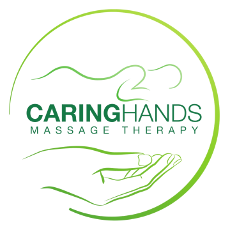If you are among the many Canadians who work at a desk, you are probably familiar with the feeling of tense shoulders, headaches, neck pain, lower back pain, or shoulder pain. You may be aware that keeping a proper posture and taking breaks to keep the body moving can help manage or prevent some of the pain. But did you know that seeing a Registered Massage Therapist (RMT) on a regular basis can help alleviate symptoms associated with desk work?
Sitting at a desk for prolonged periods often results in the shoulders slouching forward, tilted hips, or hyper-extended knees. Even people who switch to standing desks can find themselves with lower back or foot pain if they aren’t mindful of how they’re standing. With incorrect posture, certain muscles in the body become overused and fatigued while other muscles become weak from lack of usage.
A massage therapist can help by working on your fatigued muscles, allowing them to relax and lengthen back to their natural position. This is particularly true of the pectoral muscles in the front of the shoulders, which are often overworked from being at a computer. Treating the muscles around the lower back and hip areas can reduce pain and stress on the joints, giving you a greater range of mobility.
Massage therapy also facilitates and improves circulation, allowing more oxygen to reach the various parts of the body and stimulating drainage of the lymphatic system. Feeding your cells with oxygen while removing toxins through the lymphatic system leaves you feeling more energized. Massage therapy can be used in conjunction with other treatments such as chiropractic care or physiotherapy to help realign your body to its natural, pain-free, proper posture.
Another factor contributing to the overall sense of fatigue is simply job stress. Massage therapy is a great way to relax and release the stress. Spending half an hour to an hour unplugged and away from the usual pace of life is helpful for de-stressing. A good RMT will also give you suggestions for stretches and exercises that you can do on your own in between visits. These can help to maintain good posture and prevent future pain.
Many health plans include some coverage for receiving massage therapy from a Registered Massage Therapist so if you’re looking for some pain or stress relief, contact an RMT and give massage therapy a try.

